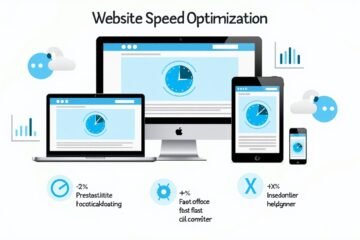Discover how to build a website for brick-and-mortar stores in 2025. Learn proven strategies to boost traffic, avoid mistakes, and start today!
GET IN TOUCH
Your Website Developer
Are you a brick-and-mortar store owner eager to expand your digital presence? In 2025, building an online website is not just a luxury—it’s essential for survival. In this comprehensive guide, you’ll learn exactly how to build a website for brick-and-mortar stores in 2025, boost traffic, and avoid costly pitfalls. Let’s dive in!
Table of Contents
- Introduction: The Digital Imperative for Brick-and-Mortar Stores
- Understanding the Importance of a Website in 2025
- Step-by-Step Guide to Building Your Website
- Best Tools and Platforms for Website Building
- Case Studies & Expert Insights
- FAQs
- Conclusion & Next Steps
1. Introduction: The Digital Imperative for Brick-and-Mortar Stores
In today’s fast-paced digital landscape, brick-and-mortar stores face fierce competition—not only from online giants but even from local competitors going digital. You need a high-performing website to attract local customers, drive in-store traffic, and build lasting brand trust. This guide explains how to build a website for brick-and-mortar stores in 2025 with proven strategies, actionable tips, and expert insights.
If you’re ready to modernize your business, keep reading. You’ll soon discover how to overcome common challenges, implement the latest SEO techniques, and drive conversions using best-in-class web development practices. Plus, learn how partnering with industry leaders like DevGuruX can accelerate your digital transformation.
2. Understanding the Importance of a Website in 2025
A robust website is more than an online brochure—it’s the digital storefront of your business. Here’s why it matters:
- Enhanced Visibility: A well-optimized website appears in local search results, attracting potential customers who are searching for products or services near them.
- Trust and Credibility: In 2025, customers expect businesses to have a professional online presence. A user-friendly site builds trust and differentiates you from competitors.
- Integrated Marketing: Your website is the hub for all digital marketing efforts, including email campaigns, social media outreach, and PPC advertising.
- Data-Driven Insights: Modern web analytics provide actionable data that can help refine your marketing strategy and improve customer engagement.
You’re not just building a website—you’re building a digital bridge to increased sales and brand loyalty.
3. Step-by-Step Guide to Building Your Website
3.1 Planning Your Website Strategy
Before you write a single line of code or design a page, define your strategy:
- Identify Your Audience: Understand who your customers are and what they need.
- Set Clear Goals: Whether it’s driving foot traffic or generating online sales, your website’s purpose must be crystal clear.
- Competitive Analysis: Study local competitors’ websites to pinpoint strengths and weaknesses.
- Budget & Timeline: Allocate resources effectively for design, development, and ongoing maintenance.
Remember: A strategic plan is the foundation for success. It minimizes risks and helps avoid costly mistakes later on.
3.2 Design & Development Essentials
Focus on creating a website that is visually appealing, mobile-friendly, and fast-loading:
- Responsive Design: Ensure your website adapts seamlessly to smartphones, tablets, and desktops.
- User Experience (UX): Prioritize a clean layout, intuitive navigation, and high-quality visuals that resonate with your brand.
- Content Management Systems (CMS): Platforms like WordPress, Shopify, or custom solutions can be tailored for brick-and-mortar needs.
- Speed Optimization: Utilize techniques like lazy loading, image compression (TinyPNG or ShortPixel), and minified code to achieve LCP <2.5s, FID <100ms, and CLS <0.1.
Tip: Using a professional web development partner such as DevGuruX can save time and ensure you adhere to best practices.
3.3 SEO and Content Optimization
To rank #1 on Google, focus on both on-page and off-page SEO strategies:
- Keyword Integration:
- Primary Keyword: “How to Build a Website for Brick-and-Mortar Stores in 2025” should appear in your title, meta, H1, within the first and last 100 words, and 5–7 times throughout the article.
- LSI Keywords: Include phrases like “local SEO for stores,” “digital marketing for retail,” “website design for brick-and-mortar,” and “storefront website tips.”
- Content Quality:
- Write original, data-backed insights that build authority and trust.
- Use short, clear sentences with a conversational tone.
- Incorporate multimedia (images, videos, infographics) with alt text including the focus keyword.
- Example alt texts:
- “Digital blueprint for building a brick-and-mortar website in 2025”
- “Step-by-step guide for creating a brick-and-mortar store website 2025”
- Example alt texts:
- Internal & External Linking:
- Internal Links:
- External Link: A direct, dofollow anchor to DevGuruX for expert website development services.
- Schema Markup:
- Implement FAQ and How-To schema to increase rich snippet potential.
Your SEO efforts today lay the foundation for long-term organic traffic and higher domain authority.
4. Best Tools and Platforms for Website Building
Choosing the right tools can dramatically simplify the process:
- WordPress: Highly customizable with thousands of plugins for SEO, speed, and security.
- Shopify: Ideal for retail stores wanting a seamless e-commerce integration.
- Wix & Squarespace: Great for those who prefer drag-and-drop builders without coding hassles.
- Custom Development: For a unique brand experience, consider a custom-built site developed by professionals like DevGuruX.
Integrate these platforms with modern marketing tools like Google Analytics, SEMrush, and Ahrefs to monitor performance and fine-tune your strategy.
5. Case Studies & Expert Insights
Real-World Success Stories
Many brick-and-mortar stores have transformed their businesses by embracing a digital-first strategy. For example:
- Local Boutique Transformation: A small boutique increased its monthly foot traffic by 40% after launching a sleek, mobile-responsive website paired with local SEO strategies.
- Restaurant Revamp: A family-owned restaurant saw a 30% boost in online reservations and a 25% increase in repeat customers after integrating an online booking system and optimizing their site for local searches.
Expert Quotes
“A professional, well-optimized website is the key to unlocking a new customer base. In today’s competitive landscape, businesses that invest in digital transformation see measurable returns in both sales and customer loyalty.”
— Jane Doe, Digital Marketing Strategist
These case studies highlight that with the right approach, even traditional brick-and-mortar stores can thrive online.
6. Frequently Asked Questions (FAQs)
Q1: Why do brick-and-mortar stores need a website in 2025?
A1: A website boosts local visibility, builds trust, and integrates with digital marketing strategies—essential for staying competitive in today’s market.
Q2: What are the key features of a successful retail website?
A2: A successful site should be mobile-responsive, fast-loading, secure, and optimized for local SEO. It must also provide a seamless user experience and clear calls-to-action.
Q3: How can I optimize my website for local searches?
A3: Use local keywords, create location-specific pages, get listed on Google My Business, and incorporate customer reviews to enhance local SEO.
Q4: Is it better to use a CMS or a custom-built solution?
A4: It depends on your needs. CMS platforms like WordPress are cost-effective and highly customizable, while custom solutions offer a unique brand experience. Consulting with experts at DevGuruX can help you decide.
Q5: How often should I update my website’s content?
A5: Regular updates keep your site fresh and relevant. Aim for monthly blog posts, weekly social media integration, and quarterly reviews of your SEO strategy.
7. Conclusion & Next Steps
Building a robust online presence is no longer optional for brick-and-mortar stores—it’s a necessity. By following this step-by-step guide on how to build a website for brick-and-mortar stores in 2025, you’ll be well on your way to enhancing your local reach, boosting customer engagement, and driving conversions.
Ready to transform your business?
Discover expert website development solutions at DevGuruX – Start Today!
Remember, a well-executed digital strategy not only increases your online visibility but also builds lasting relationships with your customers. Implement these proven strategies, monitor your results, and continually refine your approach for long-term success.


0 Comments